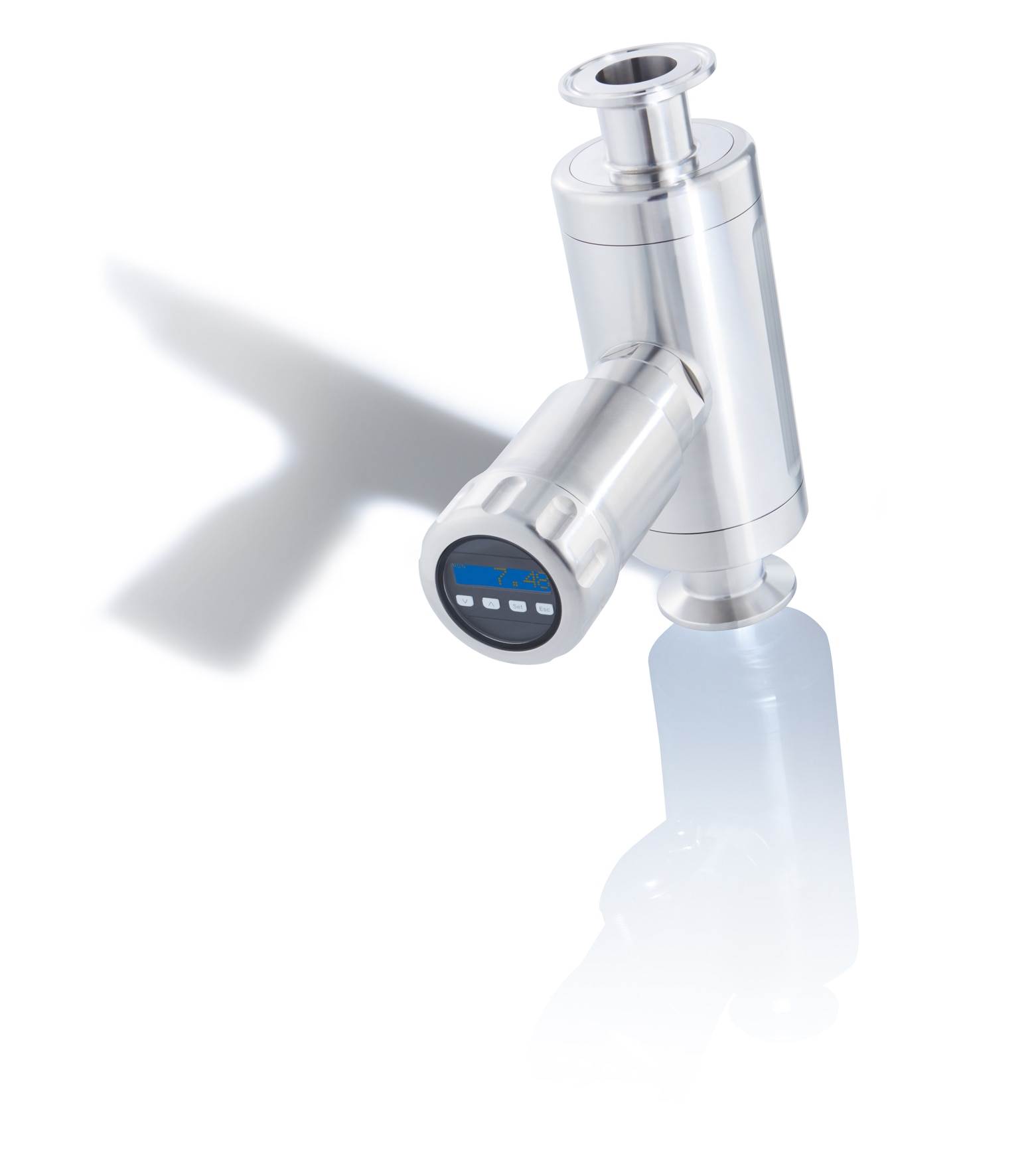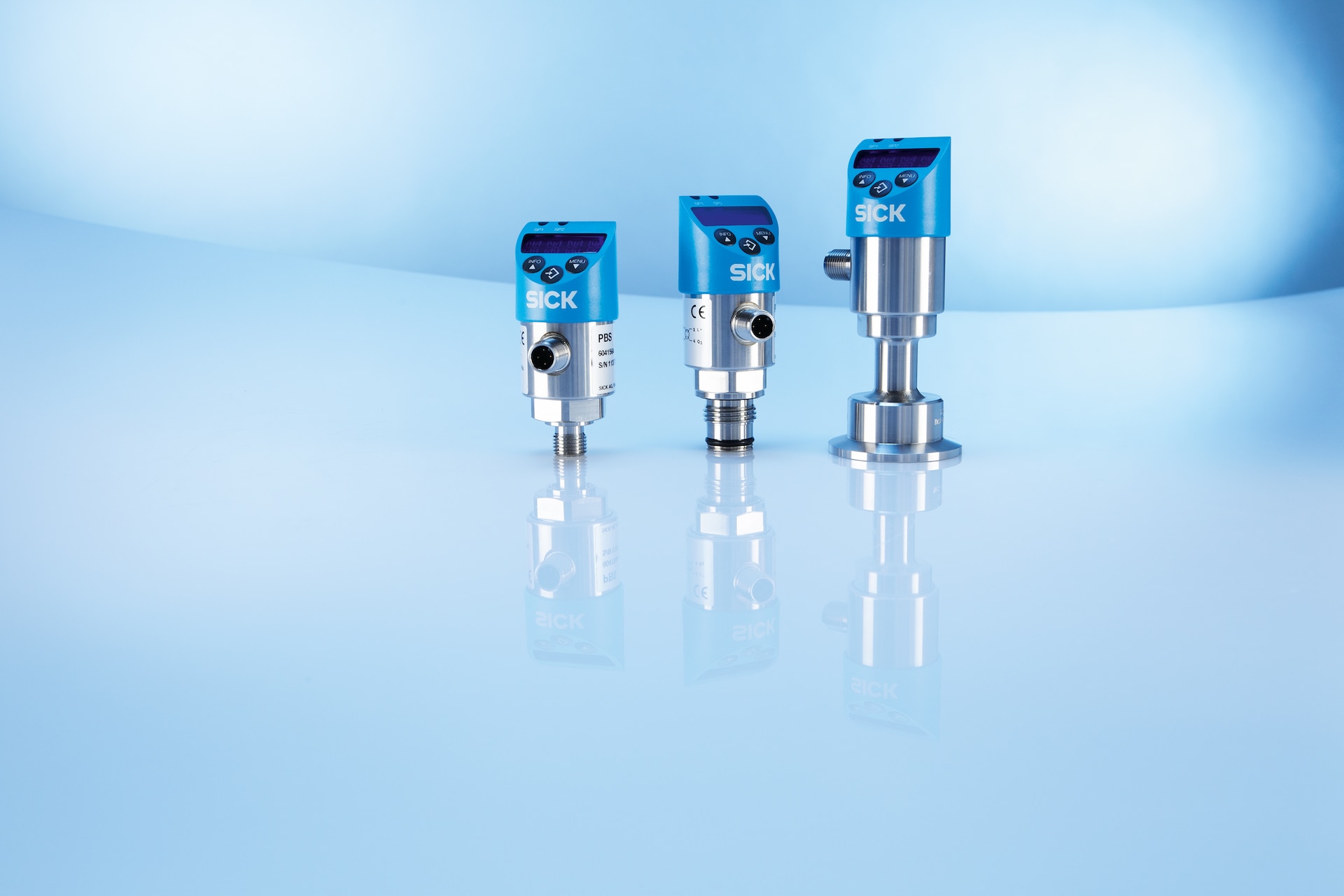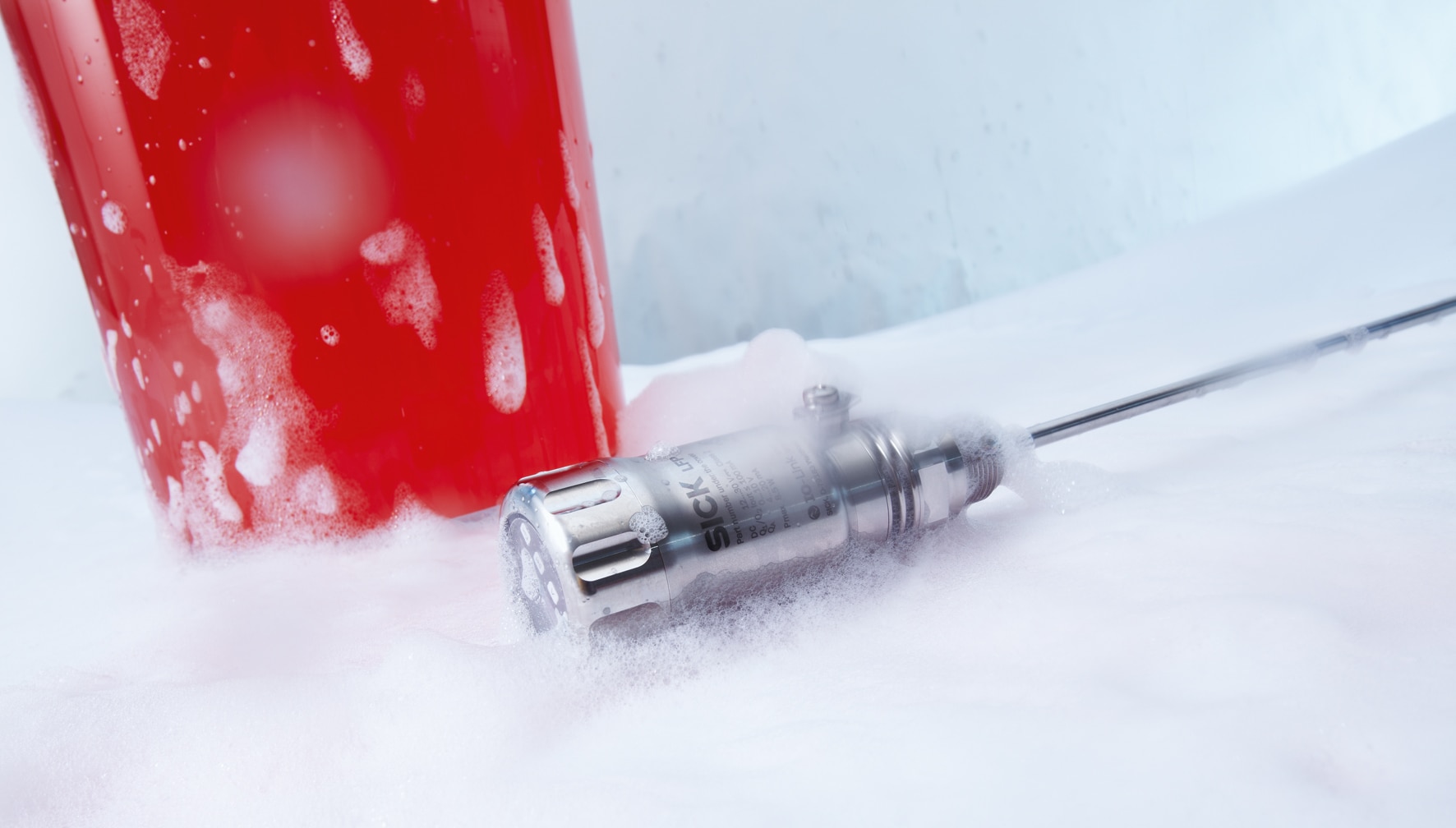Selecting the right method and appropriate device for the flow measurement generally involves a time-consuming and resource-intensive consideration of the advantages and disadvantages of the different systems and measuring methods. Particularly in the food and beverage industry, which relies on high process reliability and perfect hygiene standards, this means that there are often a large number of different measuring devices for the respective production areas. Therefore, the industry welcomes instruments that reliably monitor the flow of drinking chocolate, beer, olive oil, demineralized water, or milk, and which are just as precise in measuring the flow of cleaning agents in CIP and SIP plants or cooling water in cooling circuits. They reduce complexity and increase productivity. This variety of applications is possible thanks to sophisticated ultrasonic technology.
The DOSIC® ultrasonic sensor operates according to the concept of time-of-flight difference: If the ultrasonic signal is sent against the flow direction, it requires a longer transit time than the signal sent in the direction of the flow. The transit-time difference between the two ultrasonic signals is directly proportional to the mean flow velocity. The flow volume per unit of time is the result of the mean flow velocity multiplied by the pipe cross-section. With regard to reliability and precision in transit-time difference measurements, the DOSIC® sensor provides an alternative to Coriolis mass flowmeters, which usually entail high investment costs. The sensor can detect a wide range of challenging liquids and media for beverage and food production irrespective of their properties.
Durable and reliable in hygienic conditions
The rugged and compact model combined with a hygienic design ensures highly reliable measurement results. The absence of moving parts in the sensor eliminates potential contamination risks in the demanding hygienic environments of the food industry. In addition, the sensor has a straight, seal-free, and self-emptying measuring tube made of high-quality stainless steel (316L with Ra ≤ 0.8). The high-quality stainless-steel housing also provides the necessary ruggedness and resistance. It therefore goes without saying that the sensor has EHEDG certification and demonstrates FDA conformity. Since there is no contact between the sensor and the flowing media, and the flow volume is determined in a non-contact manner, aggressive cleaning agents in CIP and SIP operations are not a problem either. The sensor can easily withstand temperatures up to 143 degrees Celsius in SIP processes for up to one hour. The rugged design ensures a long service life and reduces the need for maintenance.

Compared to similar flow sensors that take up a lot of space when installed in compact plants, the DOSIC® has a modest design and can be used in the most confined spaces. Two configurable digital inputs and outputs and up to two analog outputs, as well as an IO-Link interface to a superordinate control unit, ensure that you get just the right start position. The IO-Link reduces cabling and also enables complete control and monitoring of the sensor in Industry 4.0 machine environments.
It is not necessary to set special parameters before the measurement process. If the medium is changed, the sensor automatically adjusts its parameters accordingly. This “Plug & Measure” solution eliminates the need for initial medium calibration and reduces installation and operating costs.
The DOSIC® is an impressively flexible measurement system that is available in two sizes (DN15 and DN25). In addition to the DOSIC® flow sensor, the extensive SICK portfolio contains other sensors that are ideal for hygienic application conditions. For example, the PHT pressure transmitter ensures constant liquid pressure in buffer tanks when bottling carbonated beverages. The PHT controls the pressure precisely at high throughput rates, even when pressure is applied to bottles and cans to prevent foaming. The PBS Hygienic pressure switch is also designed for hygienic pressure measurement and monitoring. It is used in bottling machines, particularly for the hydrostatic level measurement of liquids in tanks.


The LFP Inox, which has been developed especially for the high demands of the beverage and food industry, measures the fill levels as well as the limit levels in buffer or machine tanks. Thanks to its high-end design and variant diversity, it provides the ideal prerequisites for a number of application possibilities. Thanks to the foam mode, the LFP can easily be used even in difficult applications such as bottling foaming liquids like milk.

With the DOSIC®, the product family of SICK fluid sensors is now even more comprehensive, thus ensuring reliable quality and productivity assurance in the demanding hygienic environments of food and beverage production.


